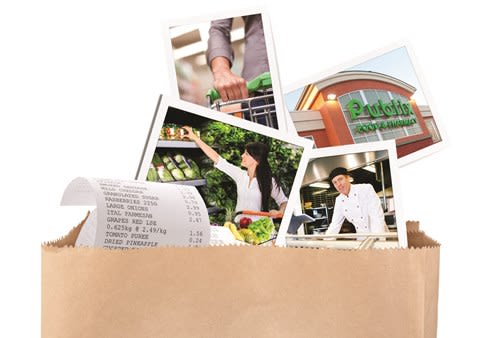Service Rules
WHAT’S THE BIGGEST DIFFERENCE BETWEEN Sarasota and New York? That question has been posed to me several times since I moved here two years ago. My answer: the supermarkets.
In the New York area, be it the Bronx or New Jersey, where I was reared, Long Island where I lived, or Manhattan, where I worked, the typical supermarket is a squalid little Guantanamo, a bit grimy, cluttered, and seething with individuals resentful at being paid less than, say, the CEO of Apple or Ford.
When it comes to supermarkets, I speak from deep experience, and not only as a consumer. While in college, I worked as a cashier and then a stock clerk for several years at a chain called Food Fair. Some of my coworkers were paragons of diligence and courtesy, but, overall, service, with or without a smile, was not our strong suit. One day, a deli clerk, responding to a woman’s repeated requests that he cut her bologna paper-thin, logically inquired: “Do you plan to eat this, or read the newspaper through it?” She stomped away, unamused. Food Fair is now many decades defunct.
In contrast, the typical supermarket in Sarasota is a palace of delight and politeness, clean, well-stocked, and staffed by people who seem to like, rather than tolerate, their customers. When an employee acts unpleasantly, it’s shocking, like finding a piranha in your goldfish bowl.
My local market happens to be a Publix, a chain whose customer service has won many accolades from trade groups and publications, including Consumer Reports.
Going there can teach basic lessons that apply to all businesses.

DETAILS MATTER: Like its rivals, Publix has a quick-checkout lane. But its sign states that it’s reserved for shoppers with “10 items or fewer.” Unremarkable, except that just about every other market uses the ungrammatical “10 items or less”—a gaffe that would have earned its author a stinging rap on the knuckles in the seventh-grade English class taught by my nemesis, Sister Emily, back in the dim days when such punishment was applauded. This is a small point, but it speaks to a larger reality: If you don’t get the small stuff right, you might not get the big stuff right, either. If management is concerned about communicating correctly, it’s probably also vigilant about such things as ensuring that the strawberries are fresh and the milk doesn’t contain melamine.
IT PAYS TO BE GENEROUS. Order cold cuts at a Publix and, usually, you will be offered a sample by the person behind the counter. Some people ask for so many samples that it’s obvious they’re seeking a free lunch or dinner. Does Publix care? Of course not. In addition to warming consumers’ tummies and hearts, perceived freebies boost customer loyalty. And, anyway, the cost of this generosity is built into the price of the roast beef, Swiss cheese or salami. In the end, the customer is satisfied, and so are the accountants. Who said you can’t have it both ways?
TEACH YOUR WORKERS WELL. Brian West, a Publix spokesman, says that, in selecting employees, the chain puts a premium on “great people skills. These soft skills are typically inherent in people; you either have them or you don't.” Roughly, this translates into likeability. But likeability goes only so far. So, “Our retail associates go through a very formalized orientation before they truly begin to interact with our customers,” he observes. “They learn about the history of the company, about our founder, George Jenkins, who believed that, to be successful, we needed to treat our customers like kings and queens.” At Food Fair, cashiers got 10 minutes of training, all on how to operate the cash register.
"Get the small stuff right."
COME UP WITH A WAY TO REWARD GOOD PERFORMANCE. The supermarket business has pitiful profit margins—1 percent on some items. Thus, most of its people are meagerly paid. But Publix rewards good performance with small periodic raises and generally promotes from within. And it offers an unusual carrot: a non-publicly traded stock available to active employees. Most recently priced at $32.50 a share, it pays an annual dividend exceeding 2 percent, and it’s kept up with the outside stock market, which means it’s more than doubled since the dark financial-crisis days of March 2009. The shares are owned directly by 103,000 of Publix’s 167,000 workers, as well as indirectly by the 119,000 members of its employee stock ownership plan. (There’s a lot of overlap.) Wall Street incessantly contends that having an ownership stake, even a minuscule one, aligns the interests of workers, managers, and shareholders. But that idea seems to work a lot better at the Florida supermarket chain than it does at many big publicly traded companies.
DON’T BE AFRAID TO STEAL GOOD IDEAS. Publix didn’t invent the “BOGO”—the buy one, get one free promotion. And it wasn’t the first retailer to have clerks help shoppers unload their grocery carts at their cars. Or offer digital discount coupons. Or online ordering. But if something works, why not use it? In the end, being the first doesn’t matter; being the best does.
■ Sarasota-based business journalist Rich Rescigno is a former managing editor of Barron's.